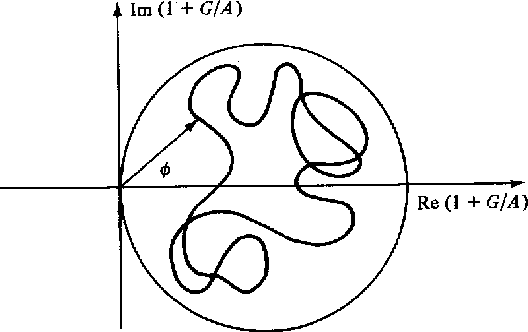 |
Figure 10 Filters operating in parallel.
We have seen that in a cascade of filters the filter polynomials are multiplied together. One might conceive of adding two polynomials A(Z) and G(Z) when they correspond to filters which operate in parallel. See Figure 10.
 |
When filters operate in parallel their Z transforms add together. We have seen that a cascade of filters is minimum phase if, and only if, each element of the product is minimum phase. Now we will see a sufficient (but not necessary) condition that the sum A(Z) + G(Z) be minimum phase. First of all, let us assume that A(Z) is minimum phase. Then we may write
| (13) |
|
2-11
Figure 11 Phase of a positive real function lies between |  |
Since the curve cannot enclose the origin,
the phase must be that of a minimum-phase function.
In words, ``You can add garbage to a minimum-phase wavelet
if you do not add too much." This somewhat abstract theorem has
an immediate physical consequence. Suppose a wave characterized
by a minimum phase A(Z) is emitted from a source and
detected at a receiver some time later.
At a still later time an echo bounces off
a nearby object and is also detected at the receiver.
The receiver sees the signal
![]() where n measures the delay from
the first arrival to the echo and
where n measures the delay from
the first arrival to the echo and ![]() represents the amplitude
attenuation of the echo. To see that Y(Z) is minimum phase, we
note that the magnitude of Zn is unity and that the reflection
coefficient
represents the amplitude
attenuation of the echo. To see that Y(Z) is minimum phase, we
note that the magnitude of Zn is unity and that the reflection
coefficient ![]() must be less than unity (to avoid perpetual
motion) so that
must be less than unity (to avoid perpetual
motion) so that ![]() takes the role of G(Z). Thus
a minimum-phase wave along with its echo is minimum phase. We will
later consider wave propagation situations with echoes of the echoes
ad infinitum.
takes the role of G(Z). Thus
a minimum-phase wave along with its echo is minimum phase. We will
later consider wave propagation situations with echoes of the echoes
ad infinitum.